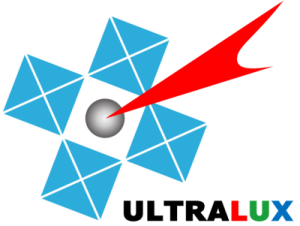Our Team
 Paul Heremans received the M. Sc. and Ph. D. degree in Electrical Engineering from the University of Leuven, Belgium, in 1984 and 1990, respectively.
Paul Heremans received the M. Sc. and Ph. D. degree in Electrical Engineering from the University of Leuven, Belgium, in 1984 and 1990, respectively.
During his PhD, funded by a grant of the Belgian National Science Foundation (NFWO), Paul studied hot-carrier degradation mechanisms in CMOS transistors, using the then-freshly-discovered charge pumping technique. For his post-doctoral research, he switched to III-V light emitters for inter-chip optical interconnects. He joined imec as senior researcher in 1992 and worked initially on high-efficiency AlInGaP light-emitting diodes, realized by photon recycling and surface-texturing. In 1998, Paul introduced research on organic opto-electronic devices at imec, and he became group leader of imec’s opto-electronics group. He became Department head in 2002, imec Fellow in 2007, and Technology Director of the Holst Centre in 2013 (till 2016).
Paul is Vice President and Senior Fellow at imec, heading the research activities on Energy and on Sensors & Actuators. He is also part-time Professor at the University of Leuven in the EE department (ESAT).
 Robert Gehlhaar studied physics at the TU Dresden, Germany and received his PhD degree in 2007. Since this time, he is working on thin-film devices to generate, manipulate, or absorb and convert light. His research spans from microcavities over organic light-emitting field-effect transistors and thin-film solar cells to nanostructured films for waveguide mode manipulation. Having seen the excellent beam properties from the simple layer stack and organic VCSELs, he got motivated to find a bridge from optical pumping to electrical excitation in thin-film devices. With the emergence of perovskites in the world of optoelectronics, a new class of materials has appeared that fuels this motivation.
Robert Gehlhaar studied physics at the TU Dresden, Germany and received his PhD degree in 2007. Since this time, he is working on thin-film devices to generate, manipulate, or absorb and convert light. His research spans from microcavities over organic light-emitting field-effect transistors and thin-film solar cells to nanostructured films for waveguide mode manipulation. Having seen the excellent beam properties from the simple layer stack and organic VCSELs, he got motivated to find a bridge from optical pumping to electrical excitation in thin-film devices. With the emergence of perovskites in the world of optoelectronics, a new class of materials has appeared that fuels this motivation.
He is the project manager of ULTRA-LUX.
 Iakov Goldberg received his Bachelor of Science degree in Electronics and Nanoelectronics from National Research University of Electronic Technology (Russia) in 2017. Subsequently, he was awarded a joint Master of Science degree in Nanoscience and Nanotechnology from KU Leuven (Belgium) and TU Dresden (Germany) in 2019. He joined ULTRA-LUX project shortly after the graduation. In the framework of ULTRA-LUX, he is focusing on perovskite light-emitting device design and its integration into the resonator cavity by using imec advanced cleanroom technology. The research also involves process and material optimization to mitigate parasitic optical and electrical losses that particularly occur at higher current densities. Among other responsibilities are various electrical, structural, and optical methods to extensively characterize existing architectures.
Iakov Goldberg received his Bachelor of Science degree in Electronics and Nanoelectronics from National Research University of Electronic Technology (Russia) in 2017. Subsequently, he was awarded a joint Master of Science degree in Nanoscience and Nanotechnology from KU Leuven (Belgium) and TU Dresden (Germany) in 2019. He joined ULTRA-LUX project shortly after the graduation. In the framework of ULTRA-LUX, he is focusing on perovskite light-emitting device design and its integration into the resonator cavity by using imec advanced cleanroom technology. The research also involves process and material optimization to mitigate parasitic optical and electrical losses that particularly occur at higher current densities. Among other responsibilities are various electrical, structural, and optical methods to extensively characterize existing architectures.
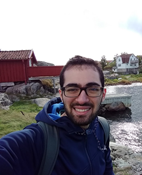 Karim Elkhouly received his Bachelor’s degree in electronics engineering at the German University in Cairo (GUC), Egypt in 2017. He then earned his Master’s degree in nanoscience & nanotechnology at KU Leuven, Belgium, and the Chalmers University of Technology, Sweden in 2019. His background covers various topics including electronics, optics, and semiconductor physics. In October 2019, he joined the ULTRA-LUX project as a PhD researcher with the aim of studying the fundamentals of Perovskite light-emitting diodes at high current densities relevant to injection lasing. His main work is concerned with optoelectronic characterization of PeLED devices using different experimental techniques. This includes electrical characterization using sub-µs voltage pulses and low temperature measurements in cryogenic conditions. Collaborating with the team, he aims to demonstrate an electrically pumped perovskite laser.
Karim Elkhouly received his Bachelor’s degree in electronics engineering at the German University in Cairo (GUC), Egypt in 2017. He then earned his Master’s degree in nanoscience & nanotechnology at KU Leuven, Belgium, and the Chalmers University of Technology, Sweden in 2019. His background covers various topics including electronics, optics, and semiconductor physics. In October 2019, he joined the ULTRA-LUX project as a PhD researcher with the aim of studying the fundamentals of Perovskite light-emitting diodes at high current densities relevant to injection lasing. His main work is concerned with optoelectronic characterization of PeLED devices using different experimental techniques. This includes electrical characterization using sub-µs voltage pulses and low temperature measurements in cryogenic conditions. Collaborating with the team, he aims to demonstrate an electrically pumped perovskite laser.
 Nirav Annavarapu received his Bachelor’s degree in Electronics and Communication Engineering from Manipal University, where he developed an interest in Electromagnetics and Wireless Communication. He proceeded to pursue an Erasmus Mundus Master’s course on Nanoscience and Nanotechnology at KU Leuven and TU Dresden. During the Master’s, he learned the basics of nanotechnology in a vast array of fields ranging from semiconductors to biomolecules, and eventually specialized in Integrated Photonics- where he combined his interests in Electromagnetics and Nanotechnology. He joined the Ultra-lux project as a PhD student soon after graduating from the Master’s program. His task in the Ultralux project is to characterize the optical properties of perovskites (like optically pumped Gain) and design optical waveguides and resonators which would be suitable for lasing. The waveguide/resonant cavity design incorporates inputs from the LED stack design (provided by colleagues) in order to make a stack capable of electrically pumped lasing.
Nirav Annavarapu received his Bachelor’s degree in Electronics and Communication Engineering from Manipal University, where he developed an interest in Electromagnetics and Wireless Communication. He proceeded to pursue an Erasmus Mundus Master’s course on Nanoscience and Nanotechnology at KU Leuven and TU Dresden. During the Master’s, he learned the basics of nanotechnology in a vast array of fields ranging from semiconductors to biomolecules, and eventually specialized in Integrated Photonics- where he combined his interests in Electromagnetics and Nanotechnology. He joined the Ultra-lux project as a PhD student soon after graduating from the Master’s program. His task in the Ultralux project is to characterize the optical properties of perovskites (like optically pumped Gain) and design optical waveguides and resonators which would be suitable for lasing. The waveguide/resonant cavity design incorporates inputs from the LED stack design (provided by colleagues) in order to make a stack capable of electrically pumped lasing.
 Sarah Hamdad received her Bachelor’s degree in General Physics and a Master's in the field of Interaction Light Matter at Mouloud Mammeri University at Tizi Ouzou (Algeria) in 2017. She participated in an international call INSPIRE (NterdiSciPlinarity and excellence for doctoral training of International REsearchers in Paris) and earned funding for a PhD thesis at Sorbonne Paris Nord University (France). She received her PhD degree in the field of Physics of materials and components in 2021. She was a temporary assistant for teaching and research for one year at Sorbonne Paris Nord and did a one-year postdoc in the ICB laboratory in Burgundy (France). She joined the UltraLux group in 2022 to work on the demonstration of the lasing in the electrically pumped light-emitting diodes based on perovskite semiconductors. Her work involves the optimization of the cavity effect and shaping the pumping for the management of the lasing process. The studies are mainly focused on the optimization of the device and the development of characterization techniques to improve the performances of the PeLED towards the Laser Diode.
Sarah Hamdad received her Bachelor’s degree in General Physics and a Master's in the field of Interaction Light Matter at Mouloud Mammeri University at Tizi Ouzou (Algeria) in 2017. She participated in an international call INSPIRE (NterdiSciPlinarity and excellence for doctoral training of International REsearchers in Paris) and earned funding for a PhD thesis at Sorbonne Paris Nord University (France). She received her PhD degree in the field of Physics of materials and components in 2021. She was a temporary assistant for teaching and research for one year at Sorbonne Paris Nord and did a one-year postdoc in the ICB laboratory in Burgundy (France). She joined the UltraLux group in 2022 to work on the demonstration of the lasing in the electrically pumped light-emitting diodes based on perovskite semiconductors. Her work involves the optimization of the cavity effect and shaping the pumping for the management of the lasing process. The studies are mainly focused on the optimization of the device and the development of characterization techniques to improve the performances of the PeLED towards the Laser Diode.
 Weiming Qiu received his bachelor's and master's degrees in Polymer Materials and Engineering from Zhejiang University, China. In 2017, he got his PhD degree in Materials Engineering from KU Leuven in collaboration with imec, Belgium, working on device stack optimization of perovskite solar cells. After that, he received a postdoctoral fellowship grant from Research Foundation Flanders, working on stable and high-brightness perovskite light-emitting diodes. In the ULTRA-LUX project, he is taking the lead to understand the work/failure mechanism of perovskite light-emitting diodes and on top of that optimize the device stack through perovskite composition engineering, interface layer engineering, etc.
Weiming Qiu received his bachelor's and master's degrees in Polymer Materials and Engineering from Zhejiang University, China. In 2017, he got his PhD degree in Materials Engineering from KU Leuven in collaboration with imec, Belgium, working on device stack optimization of perovskite solar cells. After that, he received a postdoctoral fellowship grant from Research Foundation Flanders, working on stable and high-brightness perovskite light-emitting diodes. In the ULTRA-LUX project, he is taking the lead to understand the work/failure mechanism of perovskite light-emitting diodes and on top of that optimize the device stack through perovskite composition engineering, interface layer engineering, etc.
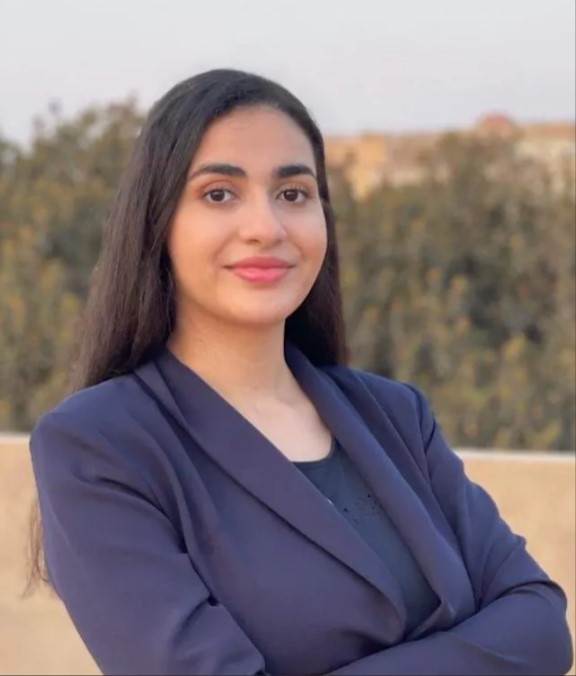 Racha Akrour received her bachelor's degree in Physics Sciences from the Free University of Brussels (ULB), Belgium in 2021. Her interest in optics lead her to pursue a Master's degree in Photonics Engineering in Vrije Universiteit Brussels (VUB) and Universiteit Gent (UGent), Belgium. Shortly after her graduation in 2023, she joined the ULTRA-LUX project as a PhD researcher working on the optical properties of perovskite lasers. Her tasks primarily involve the characterization of resonant microcavities supporting perovskite lasing, to contribute to the project's progress towards low lasing thresholds and higher quality beam properties injection laser diodes.
Racha Akrour received her bachelor's degree in Physics Sciences from the Free University of Brussels (ULB), Belgium in 2021. Her interest in optics lead her to pursue a Master's degree in Photonics Engineering in Vrije Universiteit Brussels (VUB) and Universiteit Gent (UGent), Belgium. Shortly after her graduation in 2023, she joined the ULTRA-LUX project as a PhD researcher working on the optical properties of perovskite lasers. Her tasks primarily involve the characterization of resonant microcavities supporting perovskite lasing, to contribute to the project's progress towards low lasing thresholds and higher quality beam properties injection laser diodes.
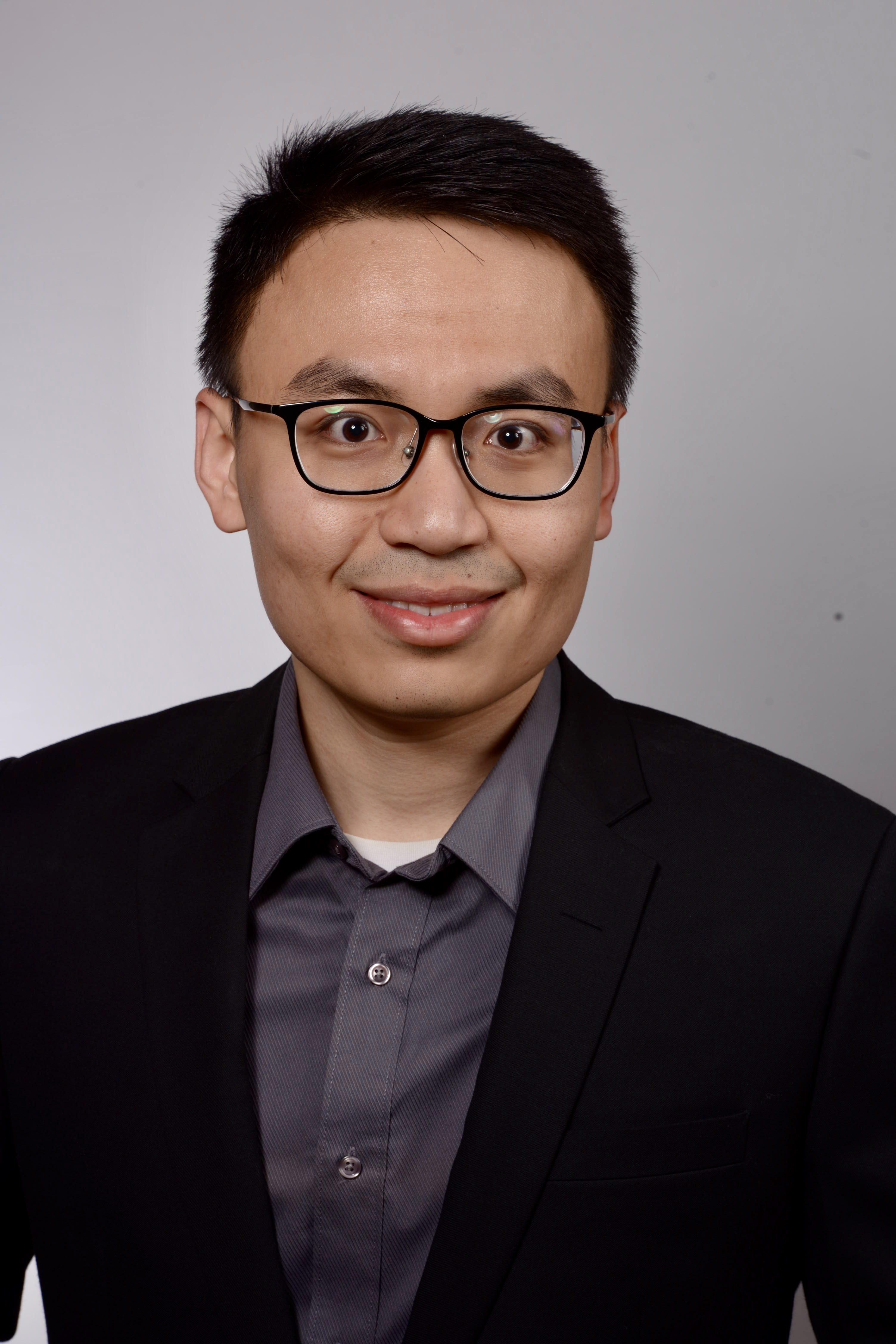 Hong Hai Nguyen received his Bachelor of Engineering in Materials Engineering from Nanyang Technological University (Singapore) in 2018. Subsequently, he joined GlobalFoundries (Singapore) as Yield and Integration Engineer, where he handled CMOS products of technology nodes 40 and 55 nanometers. In 2023, he was awarded an Erasmus Mundus Master of Science in Nanoscience and Nanotechnology from KU Leuven (Belgium) and TU Dresden (Germany). He then joined the ULTRA-LUX project in IMEC Leuven (Belgium) as a PhD student. In this project, he focuses on device optimization toward perovskite injection lasing. Specifically, he works on process and material optimization to improve quantum efficiency and thermal stability particularly occur at higher current densities as well as layout design to enable fast electrical pulsing and device integration with resonator cavities.
Hong Hai Nguyen received his Bachelor of Engineering in Materials Engineering from Nanyang Technological University (Singapore) in 2018. Subsequently, he joined GlobalFoundries (Singapore) as Yield and Integration Engineer, where he handled CMOS products of technology nodes 40 and 55 nanometers. In 2023, he was awarded an Erasmus Mundus Master of Science in Nanoscience and Nanotechnology from KU Leuven (Belgium) and TU Dresden (Germany). He then joined the ULTRA-LUX project in IMEC Leuven (Belgium) as a PhD student. In this project, he focuses on device optimization toward perovskite injection lasing. Specifically, he works on process and material optimization to improve quantum efficiency and thermal stability particularly occur at higher current densities as well as layout design to enable fast electrical pulsing and device integration with resonator cavities.
People with extensive expertise who consult on the project
 Jan Genoe was born in Leuven on May 19, 1965. He received the M.S. degree in electrical engineering and the Ph.D. degree both from the KULeuven, in 1988 and 1994, respectively. After his PhD, he joined the High Magnetic Field Laboratory in Grenoble (France) as a Human Capital and Mobility Fellow of the European Community. In December 1997, he became assistant professor (docent-OP) and in September 2000 associate professor (hoofddocent-OP) at the KHLim in Diepenbeek, Belgium. In September 2003, he became also in charge of the Polymer and Molecular Electronics group in imec (part-time). His subsequent career steps in imec have been principal scientist, senior principal scientist and chief scientist in the LAE department in imec. Currently, he is Scientific Director in the Sensors and Actuators Technology department in imec. His activities on the campus Diepenbeek continued in parallel, as a member of the Embedded Systems and Security research group. In January 2006, he became part-time professor (hoogleraar-OP) and after the integration in the KULeuven, he got appointed part-time professor (hoogleraar-ZAP) in October 2014. Currently, he is the contact person of the Micro- and Nano Systems (MNS), Diepenbeek Campus.
Jan Genoe was born in Leuven on May 19, 1965. He received the M.S. degree in electrical engineering and the Ph.D. degree both from the KULeuven, in 1988 and 1994, respectively. After his PhD, he joined the High Magnetic Field Laboratory in Grenoble (France) as a Human Capital and Mobility Fellow of the European Community. In December 1997, he became assistant professor (docent-OP) and in September 2000 associate professor (hoofddocent-OP) at the KHLim in Diepenbeek, Belgium. In September 2003, he became also in charge of the Polymer and Molecular Electronics group in imec (part-time). His subsequent career steps in imec have been principal scientist, senior principal scientist and chief scientist in the LAE department in imec. Currently, he is Scientific Director in the Sensors and Actuators Technology department in imec. His activities on the campus Diepenbeek continued in parallel, as a member of the Embedded Systems and Security research group. In January 2006, he became part-time professor (hoogleraar-OP) and after the integration in the KULeuven, he got appointed part-time professor (hoogleraar-ZAP) in October 2014. Currently, he is the contact person of the Micro- and Nano Systems (MNS), Diepenbeek Campus.
His major research interest is the combination novel devices with design in novel technologies. A crucial aspect when designing using emerging technologies is the careful assessment of parameter variations in the device characteristics. This technology insight, combined with creative design variations, has enabled an increase in the level of complexity that can be obtained using designs in organic and oxide technology. Examples of design modifications to accommodate technology are the usage of a back-gate to adapt the threshold voltages and the alternative modulation scheme to obtain bidirectional communication in thin-film RFID tags. This work has resulted in 10 subsequent ISSCC presentations in the Technology Directions Session (a.o. 128bit organic RFID tags, organic microprocessor, hybrid oxide-organic RFID tags, ...). Other emerging technologies such as organic photovoltaics, piezo-electric devices, high-resolution imagers beyond comprising features below the wavelength of the light and holography are also currently being investigated. He received in 2017 an Advanced Grant of the European Research Council (ERC) on the topic of new meta-materials for holography.
He is the author and co-author of more than 150 papers in refereed journals. He is reviewer for a broad range of journals (e.g. Electrochemical and Solid-State Letters, Electron Dev. Lett., Thin Solid Films, J.Appl.Phys., Semicond.Sci.Technol., Electronic Lett., Organic Electronics, ...) and has been member for 5 years of the Technology Directions international program committee of the ISSCC.
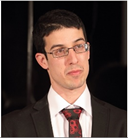 With over 10 years of international experience, Itai Lieberman has gained a broad technical knowledge and leadership skills in chemistry R&D. Itai has led developments of new methods in surface chemistry of nanoparticles, and in novel technology in the field of semiconductors, focusing on surface chemistry of flat surfaces and self-assembled monolayers. Itai has gained experience and understanding of common industrial thin film processes and especially focused on photolithography methods.
With over 10 years of international experience, Itai Lieberman has gained a broad technical knowledge and leadership skills in chemistry R&D. Itai has led developments of new methods in surface chemistry of nanoparticles, and in novel technology in the field of semiconductors, focusing on surface chemistry of flat surfaces and self-assembled monolayers. Itai has gained experience and understanding of common industrial thin film processes and especially focused on photolithography methods.
Itai has gained his Ph.D. from Carl von Ossietzky Universität in Oldenburg, Germany, under the supervision of prof. Jürgen Parisi. His thesis is titled ”Properties tuning of semiconductor nanoparticles through organic and inorganic surface chemistry”.
 Dr. Cedric Rolin is a R&D team leader within the Sensor & Actuator Technology department at imec. He received his B.Sc., M.Sc. and PhD degrees in materials science from the Université Catholique de Louvain in 2004 and 2009 respectively. During his 4 years PhD, accomplished on the premises of imec, as well during his 2 years postdoc in the group of Prof. Steve Forrest at University of Michigan, Cedric specialized in the growth of organic semiconductors. In 2013, he came back to imec as a senior researcher to develop novel methodologies for the fabrication of highly crystalline thin films of organic semiconductors. Then, from 2018 to 2020, he has been leading the Thin Film Light Output & Logic group that develops large area flexible solutions for thin film circuit and flexible backplane integration. He is at present leading the NILTECH team that performs research on the NanoImprint lithography technology for nanofeature patterning. Cedric contributes to Ultralux his practical know-how in thin-film growth, patterning and characterization, thereby striving to integrate the first electrically pumped thin film laser.
Dr. Cedric Rolin is a R&D team leader within the Sensor & Actuator Technology department at imec. He received his B.Sc., M.Sc. and PhD degrees in materials science from the Université Catholique de Louvain in 2004 and 2009 respectively. During his 4 years PhD, accomplished on the premises of imec, as well during his 2 years postdoc in the group of Prof. Steve Forrest at University of Michigan, Cedric specialized in the growth of organic semiconductors. In 2013, he came back to imec as a senior researcher to develop novel methodologies for the fabrication of highly crystalline thin films of organic semiconductors. Then, from 2018 to 2020, he has been leading the Thin Film Light Output & Logic group that develops large area flexible solutions for thin film circuit and flexible backplane integration. He is at present leading the NILTECH team that performs research on the NanoImprint lithography technology for nanofeature patterning. Cedric contributes to Ultralux his practical know-how in thin-film growth, patterning and characterization, thereby striving to integrate the first electrically pumped thin film laser.
 Isabel Pintor got her bachelor’s degree in Mechatronics Engineering (ITESM, Mexico), master’s degree in Materials Science (UMSNH, Mexico and NUT, Japan) and PhD in Materials Science and Engineering (UTD, USA), before joining as a postdoctoral researcher for imec/KU Leuven in February, 2020. The focus of her PhD was the development of inorganic semiconductors, device fabrication and characterization and their evaluation for ionizing radiation (neutrons, alphas, DUV). For her postdoctoral project, she is working in the development of broadband photodetectors based on inorganic perovskites for future integration with silicon technology. She expects to support the Ultra-lux team with inorganic materials development and device fabrication/characterization knowledge.
Isabel Pintor got her bachelor’s degree in Mechatronics Engineering (ITESM, Mexico), master’s degree in Materials Science (UMSNH, Mexico and NUT, Japan) and PhD in Materials Science and Engineering (UTD, USA), before joining as a postdoctoral researcher for imec/KU Leuven in February, 2020. The focus of her PhD was the development of inorganic semiconductors, device fabrication and characterization and their evaluation for ionizing radiation (neutrons, alphas, DUV). For her postdoctoral project, she is working in the development of broadband photodetectors based on inorganic perovskites for future integration with silicon technology. She expects to support the Ultra-lux team with inorganic materials development and device fabrication/characterization knowledge.
Do you have questions, suggestions, or ideas? Please send us an email!
